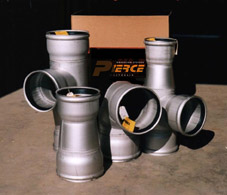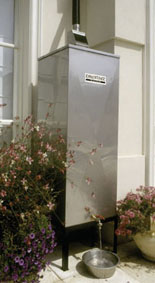ASSDA Member Stainless Steel Wire & Mesh has played a pivotal role in delivering a stainless steel coastal fencing solution that has now become the gold standard in ecological management and restoration efforts.
Situated in the Northern Beaches of New South Wales, Curl Curl Beach faces the full force of several coastal conditions, enduring relentless assaults from strong winds, salt movements, extreme temperatures, pollution, and high humidity. This region is classified as a corrosive category C5, however, the location which is adjacent to the beach has been classified as CX under AS 4312:2019 Atmospheric Corrosive Zones, Figure 2.1 (Newcastle region)














 However, Geoff Mellows from Yarrawonga Irrigation in Victoria may have solved the puzzle by using stainless steel mainline fittings - something that plastic fittings cannot yet match.
However, Geoff Mellows from Yarrawonga Irrigation in Victoria may have solved the puzzle by using stainless steel mainline fittings - something that plastic fittings cannot yet match.
 The $197 million Illawarra Wastewater Strategy will see an overhaul of the 40-year-old Wollongong sewage treatment plant (STP) including the construction of a major new water recycling plant, high level (tertiary) treatment processes and ultraviolet disinfection systems.
The $197 million Illawarra Wastewater Strategy will see an overhaul of the 40-year-old Wollongong sewage treatment plant (STP) including the construction of a major new water recycling plant, high level (tertiary) treatment processes and ultraviolet disinfection systems.



 The $80m building is due for completion in 2009 and will save on landfill, reduce greenhouse gas emissions, and will produce a rich organic matter that may be added to Perth’s sandy soil.
The $80m building is due for completion in 2009 and will save on landfill, reduce greenhouse gas emissions, and will produce a rich organic matter that may be added to Perth’s sandy soil.


 In 1994, ASSDA member, Hart to Hart Fabrications developed the Raincatcher - a unique design that separates the atmospheric and roof pollutants from the water.
In 1994, ASSDA member, Hart to Hart Fabrications developed the Raincatcher - a unique design that separates the atmospheric and roof pollutants from the water.